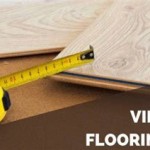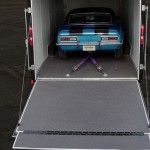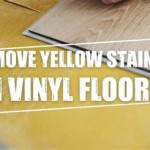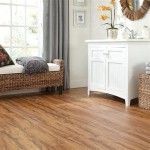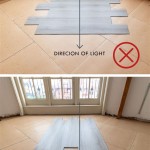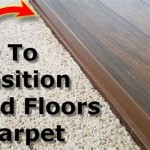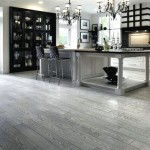Best Vapor Barrier for Laminate Flooring: A Comprehensive Guide
Laminate flooring, a popular choice for residential and commercial spaces, offers durability, aesthetic appeal, and relative affordability. However, its performance and longevity can be significantly impacted by moisture. Understanding the importance of a vapor barrier and selecting the appropriate one is crucial for ensuring the lasting integrity of a laminate floor. This article provides a comprehensive guide to vapor barriers for laminate flooring, examining different types, key considerations for selection, and proper installation techniques.
A vapor barrier, also referred to as a moisture barrier, is a material designed to prevent moisture from migrating from the subfloor up into the laminate flooring. Subfloors, often made of concrete or wood, can harbor moisture due to ground conditions, plumbing leaks, or ambient humidity. Without a proper vapor barrier, this moisture can permeate the laminate, leading to a range of problems including warping, buckling, mold growth, and ultimately, floor failure. The choice of vapor barrier is not a one-size-fits-all solution; it depends on factors like the subfloor material, existing moisture conditions, and the specific requirements of the laminate flooring product.
Understanding the Need for a Vapor Barrier
The primary function of a vapor barrier is to protect laminate flooring from moisture damage. Concrete subfloors, in particular, are porous and can wick moisture from the ground, even if a slab is above grade. Wood subfloors, while naturally less porous, can still absorb moisture from humid environments or leaks in the building envelope. This moisture, when absorbed by the laminate, causes expansion and contraction of the flooring planks. Over time, this repeated movement can lead to the interlocking seams separating, creating unsightly gaps and uneven surfaces. Furthermore, trapped moisture promotes the growth of mold and mildew, posing potential health risks and causing unpleasant odors.
Laminate flooring is generally moisture-resistant, not waterproof. The core of most laminate planks is made of high-density fiberboard (HDF) or medium-density fiberboard (MDF), both of which are susceptible to water damage. While the surface layer provides some protection, moisture can still penetrate through the seams or edges of the planks, especially in areas with high humidity or frequent spills. A vapor barrier acts as a shield, preventing this moisture from reaching the vulnerable core of the laminate flooring.
Building codes in many regions mandate the use of a vapor barrier when installing flooring over concrete slabs. Compliance with these codes ensures that the flooring installation meets minimum standards for moisture protection and prevents potential structural problems. Even in areas where not explicitly required by code, using a vapor barrier is a prudent measure to safeguard the investment in laminate flooring and ensure its long-term performance.
Types of Vapor Barriers for Laminate Flooring
Several types of vapor barriers are available for laminate flooring installations, each offering varying levels of protection and suitability for different applications. Understanding the properties of each type is essential for making an informed decision.
Polyethylene Film: Polyethylene film is a common and cost-effective option for vapor barriers. It is typically available in thicknesses ranging from 4 to 6 mil (thousandths of an inch). This type of barrier is suitable for use over concrete subfloors that have been properly tested and confirmed to have acceptable moisture levels. Polyethylene film is easy to install and can be cut to size with a utility knife. Seams should be overlapped and sealed with moisture-resistant tape to create a continuous barrier.
Foil-Faced Vapor Barriers: These barriers consist of a polyethylene or similar backing with a layer of aluminum foil laminated to one side. The foil provides an additional layer of protection against moisture and also offers some thermal insulation. Foil-faced vapor barriers are particularly useful in basements or other areas where temperature fluctuations may contribute to condensation. The reflective surface of the foil can also help to reduce radiant heat loss through the floor.
Attached Underlayment with Vapor Barrier: Many laminate flooring products come with an attached underlayment that includes a built-in vapor barrier. This simplifies the installation process and ensures proper compatibility between the flooring and the barrier. These attached underlayments are typically made of foam or cork and provide additional benefits such as sound insulation and cushioning underfoot. While convenient, it's important to ensure the integrated vapor barrier meets the specific requirements of the installation environment, particularly in areas with known moisture issues.
Liquid-Applied Membranes: For subfloors with significant moisture problems, a liquid-applied membrane may be necessary. These membranes are typically made of epoxy or polyurethane and are applied directly to the subfloor using a roller or brush. Once cured, they form a seamless, waterproof barrier that effectively prevents moisture from penetrating the flooring. Liquid-applied membranes are more expensive and require more preparation to install compared to sheet-based vapor barriers, but they offer superior protection in demanding environments.
Specialty Underlayments with Enhanced Vapor Barrier Properties: Some manufacturers offer specialty underlayments designed for specific moisture conditions or subfloor types. These underlayments may incorporate advanced materials or technologies to provide enhanced vapor barrier performance. For example, some products utilize a closed-cell foam structure to prevent moisture absorption, while others contain antimicrobial additives to inhibit mold growth. Such underlayments often come with higher price points, but can be justified in high-risk environments.
Key Considerations for Selecting a Vapor Barrier
Choosing the right vapor barrier involves carefully evaluating the specific conditions of the installation site and the requirements of the laminate flooring product. Several key factors should be considered during the selection process.
Subfloor Material and Moisture Level: The type of subfloor and its moisture content are critical determinants in selecting a vapor barrier. Concrete subfloors should be tested for moisture levels using a calcium chloride test or a relative humidity probe. This test provides an accurate measurement of the moisture vapor emission rate (MVER) of the concrete. If the MVER exceeds the manufacturer's recommended limit for the laminate flooring, a more robust vapor barrier system, such as a liquid-applied membrane, may be necessary. For plywood or OSB subfloors, ensure the wood is properly seasoned and dry before installing the vapor barrier and laminate flooring. High moisture levels in wood subfloors can lead to warping and cupping, even with a vapor barrier in place.
Climate and Ambient Humidity: The climate and ambient humidity of the region where the flooring is being installed can significantly impact the performance of the vapor barrier. In humid climates, moisture levels are generally higher, increasing the risk of moisture migration through the subfloor. In such environments, a thicker vapor barrier or one with a higher perm rating (a measure of water vapor permeability) may be required. Basements, in particular, often experience high humidity levels and require a more robust vapor barrier system.
Laminate Flooring Manufacturer's Recommendations: Always consult the laminate flooring manufacturer's installation guidelines regarding vapor barrier requirements. Some manufacturers specify a particular type or thickness of vapor barrier that must be used to maintain the flooring warranty. Deviation from these recommendations can void the warranty and potentially lead to flooring problems. Pay close attention to any specific requirements related to overlapping seams, sealing edges, and using compatible underlayment materials.
Budget Considerations: The cost of vapor barriers can vary significantly depending on the type, thickness, and features. While it's important to choose a vapor barrier that provides adequate protection, it's also necessary to consider the budget limitations of the project. Polyethylene film is typically the most affordable option, while liquid-applied membranes are the most expensive. Evaluate the long-term cost benefits of investing in a higher-quality vapor barrier that can prevent costly flooring repairs or replacements in the future.
Installation Complexity: The ease of installation is another factor to consider when selecting a vapor barrier. Polyethylene film and underlayments with attached vapor barriers are relatively easy to install, requiring minimal tools and expertise. Liquid-applied membranes, on the other hand, require more preparation and skill to apply properly. Consider the available resources and expertise when choosing a vapor barrier, and consult with a professional flooring installer if necessary.
Properly selecting and installing a vapor barrier is a fundamental step in ensuring the longevity and performance of laminate flooring. Careful consideration of the subfloor conditions, climate, and manufacturer's recommendations will lead to a more durable and aesthetically pleasing result.

What Is A Moisture Barrier And When It Needed For Flooring Inc

Quietwalk Underlayment For Floating Floors The Green Design Center

Quietwalk 360 Sq Ft 6 X 60 3 Mm Underlayment With Sound And Moisture Barrier For Laminate Engineered Floors Qw360b1lt The Home Depot

Best Underlayment For Laminate Flooring On Concrete

Quietwalk Laminate And Hardwood Acoustical Vapor Barrier 3 Ft W X 33 34 L T Premium Felt Moisture Resistant Flooring Underlayment 100 Sq Roll In The Department At

Vapor Barrier Under Laminate Floor And Floating Problems

Quietwalk Underlayment For Laminate And Floating Flooring Go Floors

What Is A Moisture Barrier And When It Needed For Flooring Inc

Underlayment Buyer S Guide

Quietwalk 100 Sq Ft X 3 33 34 1 4mm Acoustical Underlayment With Vapor Barrier For All Vinyl Plank Flooring Qwlv100 The Home Depot
Related Posts

